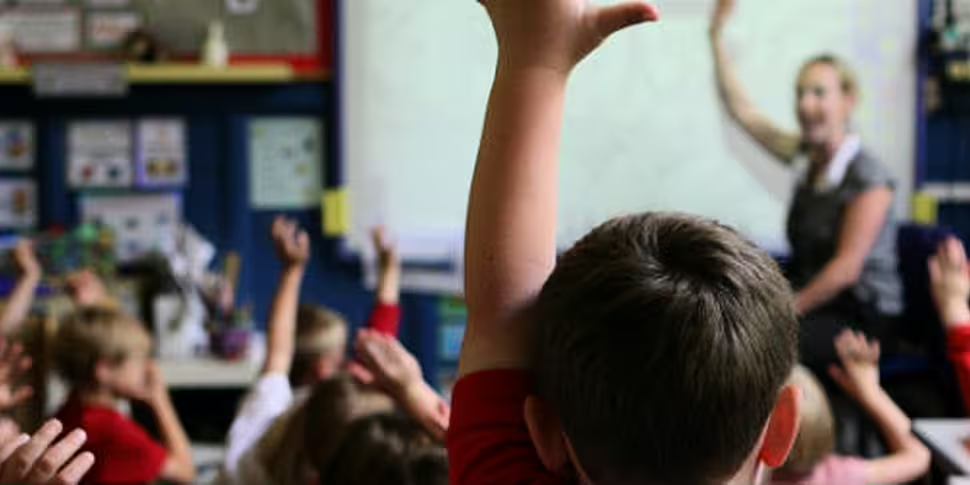What does it mean when we say a school is under the patronage of a group, such as the Catholic church?
School patronage is a topic for discussion again this week after Educate Together warned the Department of Education risks the 'double discrimation' of some schoolchildren.
Correspondence between Department officials and Educate Together about the group's enrolment policies has been released.
The group operates on a 'first come first served' basis at its multi denominational schools, however the Department wants children from the local area to get priority at new schools.
CEO of Educate Together Paul Rowe told Newstalk.com's Breakfast show that if the rule is enforced, children looking to attend his schools could be put at a disadvantage twice.
"If they are not Catholic and they don't have a baptismal cert then they will be at the bottom of any list in any case within any particular catchment area and now they are being discriminated against if they want to access an Educate Together school because they will be at the bottom of another list."
If you can't view this poll, please refresh the page.
Patronage explained
Enrolment policies are set by school patrons, something that gives them enormous influence over the education system. How does it all work?
A patron is involved in setting up a school and supporting the school’s Board of Management in its day-to-day work.
A school's Board can be removed by the patron and a patron is allowed to run a school directly, if desired.
Traditionally religious orders and local parishes were very involved in setting up and running schools.
These patrons often gave land for schools to use and made contributions to the costs of building and running schools.
That is why we have arrived at a situation whereby 96% of Irish primary schools are owned by churches - 90% of them fall under the Catholic Church's patronage.
Meanwhile, religious-owned secondary schools make up just over half of all 723 second-level schools.
Technically, these schools are privately owned but publicly funded since the State pays the bulk of the building and running costs.
Multi-denominational schools are usually owned by a limited company or board of trustees.
Gaelscoileanna may be denominational and come under the same patronage as Catholic schools but some have their own limited company.
There are also nine model schools in Ireland, which are owned by the State. The State itself has not directly established any new schools since independence.
However, there are several special schools owned by the State - some are also owned by religious orders.
Counting costs
For new schools, the State pays the full cost of the site - though the patron can choose to fund the site cost.
The State pays a direct capitation grant of €178 per student to each primary school.
The State pays the teachers' salaries.
Primary schools also receive a grant for caretaking and secretarial services of up to €147 per student, depending on the schools status.
Each school also receives a book grant of up to €21 per pupil.
Each school gets a grant towards the cost of minor works.
Some schools qualify for enhanced funding under various schemes for tackling disadvantage in primary schools.
Enrolment inequality
The Department of Education is mandated to 'support the educational success of each learner'- this is a task they are struggling with in the area of enrolment.
Religious schools have the right to refuse a child who does not share their religious beliefs. That means there are situations where children cannot attend their local school.
Some in the Catholic Church say it should be up to every group that wants to open a school to raise funds.
But others say church-run schools are largely publicly-funded and they would like them to hand over schools to other patrons to use as part of a process known as divestment.
Alternatively, they could change their enrolment policies.
Change is slow
Former Minister of Education Ruairí Quinn was working to secure agreement from the Catholic Church on the divestment, or handing over to other patrons, of some of its 1700 schools.
This work fell under a Forum on Patronage and Pluralism in the Primary Sector that was set up in 2011.
Recently Mr. Quinn told Newstalk.com that only nine schools had been successfully divested since then, despite initial support.
He described a dip in enthusiasm when it came to naming actual schools the church was willing to shed.
Religious Education
The patrons of a school are allowed to determine the course of the religious education the children attending their schools will receive. Their class material does not have to be approved by the Department of Education.
There is no curriculum for religion in schools here, though other subjects are governed by a curriculum that was introduced in 1999.
For parents who do not want their children to be educated in a school with a particular religious ethos this near 100% saturation of schools is a problem.
Hence the establishment of Educate Together - a limited company - 35 years ago.
Educate Together describes itself as a patron of a growing number of school run according to the Educate Together Charter.
It is an independent NGO that runs schools that guarantee equality of access to education regardless of a child's 'social, cultural or religious background'.
Their first school opened in 1978.
Primary v Secondary
Patronage is, arguably, more of an issue at primary school level because children are being prepared for the sacraments of Communion and Confirmation.
While officials are prioritising the divestment of primary schools they say they will also work on providing a more pluralist system of patronage at second level, recognising a wider number of patrons.
The problem is also more apparent in rural Ireland where there is often no alternative to the local Catholic church-run school.









